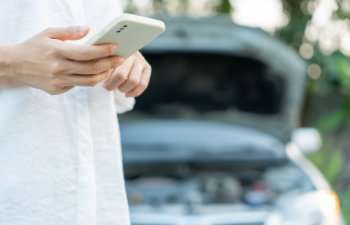
As technology advances, modern cars come equipped with more and more driver-assistance features that promise to make our driving experience safer and more comfortable. However, as unique as these features are, they pose a significant challenge regarding car repair and maintenance.
With the growing number of sensors, cameras and other electronic components in modern cars, repairs are becoming more complex and require specialized expertise. In addition, even a minor mistake during a repair can lead to severe consequences, including accidents, system malfunctions and diminished value.
Wreck Check Atlanta wants consumers to know about common repair mistakes with driver-assistance technology and how they can affect your car’s value.
Misaligned Sensors and Cameras
Driver-assistance systems rely heavily on sensors and cameras to provide accurate information about the car’s surroundings. If these sensors and cameras are misaligned during a repair, they can provide inaccurate data, leading to false alarms or system malfunctions.
For example, suppose the front-facing camera that controls the automatic emergency braking system is misaligned. In that case, it may not detect an obstacle in the car’s path, leading to a potential collision.
Misaligned sensors and cameras can also affect the car’s resale value, as potential buyers may be wary of purchasing a car with faulty driver-assistance technology.
Improper System Calibration
Driver-assistance systems require precise calibration to function properly. Calibration ensures that the sensors and cameras are correctly aligned and that the system responds appropriately to different driving conditions.
If a repair technician fails to calibrate the systems correctly, the driver-assistance technology may not work as intended, leading to safety issues and diminished value.
For example, if the lane departure warning system is not calibrated correctly, it may provide false alarms or fail to detect when the car drifts out of its lane.
Using Non-OEM Parts
Many modern cars come with proprietary parts specifically designed to work with the car’s driver-assistance technology. Using non-OEM parts during a repair can compromise the system’s performance and lead to safety issues.
For example, suppose a non-OEM camera replaces a damaged camera. In that case, it may not provide the same level of accuracy as the original camera, leading to false alarms or system malfunctions.
Using non-OEM parts can also affect the car’s resale value, as potential buyers may hesitate to purchase a car with non-standard parts.
Failure to Update Software
Driver-assistance systems rely on software to function correctly. If the software is not updated regularly, it may become outdated and fail to provide accurate information or respond appropriately to different driving conditions.
For example, if the software that controls the adaptive cruise control system is not updated, it may not respond correctly to changes in traffic patterns, leading to potential accidents.
Failure to update software can also affect the car’s resale value, as potential buyers may be wary of purchasing a car with outdated technology.
Post-Repair Inspection from Wreck Check Atlanta
Driver-assistance technology is an incredible advancement in the automotive industry. However, it requires specialized expertise and careful attention during repairs and maintenance to ensure that it functions properly. Failing to address these concerns can lead to safety issues and diminished value. If you own a car with driver-assistance technology and wonder if it is functioning correctly after repairs, contact Wreck Check Atlanta to begin the process of a post-repair inspection.
Posted on behalf of

